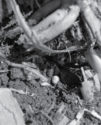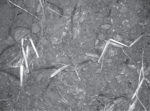Advertise Follow Us
Articles Tagged with ''scouting''
No-Till Notes
Assess Crop Perfomance Frequently This Season
Weekly scouting will help you discover what’s affecting your no-tilled corn and soybean yields and the changes you need to make for 2011.
Read More
What I've Learned from No-Tilling
Always Learning More From No-Till And Strip-Till
Tom Oswald continues the onfarm research that convinced him 20 years ago to avoid full-width tillage
Read More
No-Till Notes
Prepare Your Post-Planting Checklist
Check the performance of your planter, starter fertilizer and early season weed control, and make preparations for effective sidedressing
Read More
No-Till Notes
Start Scouting For No-Till Soybean Pests
Soybean aphids and bean leaf beetles the are most likely insects to take a bite out of your yield potential.
Read More
No-Till Notes
10 Early Season Scouting Tips
With the crop emerging, scout to see whether there are problems that can be corrected.
Read More
Some of Your Friends Live Underground
Earthworms can accomplish a lot in undisturbed fields, and no-tillers are in perfect position to capitalize, says this speaker at the 2006 National No-Tillage Conference.
Read More
Eyeballing Organic Matter
Simple tests can help you see the improvements in organic matter due to no-tilling.
Read More








